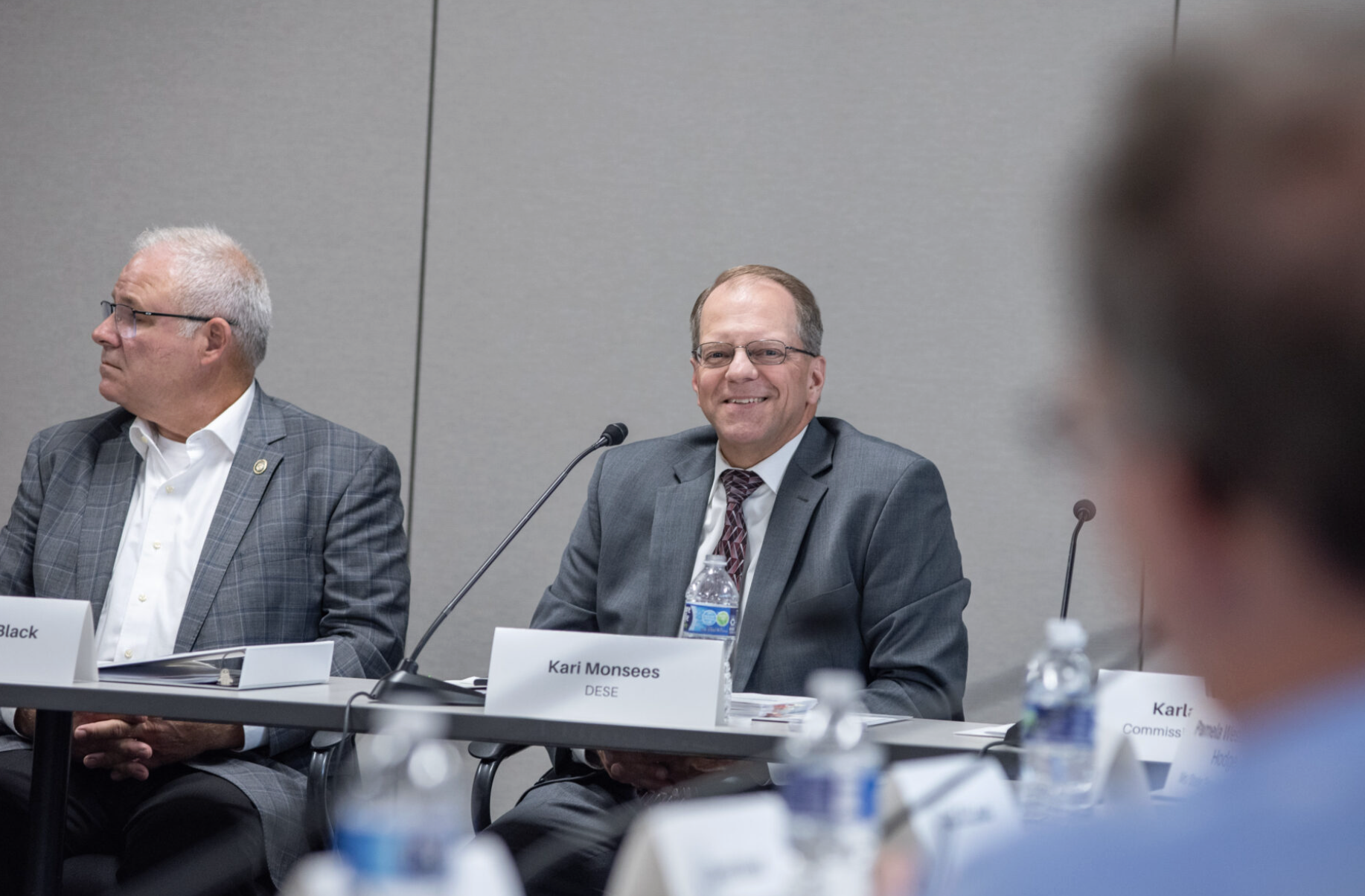
Working groups studying performance incentives, local effort, student counts and funding targets bring subject-matter experts to influence formula
By: Annelise Hanshaw
Missouri Independent
Additional public education experts are joining discussions on the future of the state’s school funding formula as work groups convene for bi-monthly meetings.
Gov. Mike Kehoe created the Missouri School Funding Modernization Task Force in an executive order in January and appointed members from a wide swath of backgrounds, including a leader from the Missouri Soybean Association and a senior director from the Herzog Foundation, one of six educational assistance organizations that help distribute private school scholarships under the state’s MOScholars program.
Now, with work groups meeting, the number of people guiding the discussion has more than doubled. Among those joining the effort are Linda Quinley, who serves as senior director of school finance for the Missouri School Boards Association, and Premier Charter School’s director of finance Andy Vien.
Between the two working groups that met Wednesday, seven of the new advisors have experience as superintendents or other administrative positions for public school districts.
The groups will meet six times through the end of the year and are expected to give a report to the larger task force in January or February.
Wednesday’s meetings of the local effort and performance incentives work groups largely served to orient members to their mission.
The local effort task force is charged with finding solutions to adapt a new funding formula to varying property values and tax rates statewide.
The current foundation formula calculates local funding with an assumed tax rate of $3.43 per $100 of assessed valuation. This is multiplied by the assessed property values within a school district from the 2004-05 school year.
Now, 20 years later, school districts with shrinking property values or with tax rates below 3.43% are shortchanged.
The Department of Elementary and Secondary Education’s recently retired finance chief Kari Monsees, who led Wednesday’s meetings, said the group should find a way to unfreeze property values.
“Is there another way we can calculate this local revenue that remains more accurate over time?” he said. “It’s going to be a moving target, but we just need to be thinking about how we try to make our recommendations more immune to those policy shifts over time.”
Complicating the group’s efforts are conversations statewide about property-tax policies and a push from the Missouri State Tax Commission to increase residential assessments.
Monsees raised the idea of adding local income levels as a factor.
The second group meeting Tuesday is charged with creating additional sources of funding for high-performing schools, following Kehoe’s call for “incentives based on performance of schools and educational outcomes.” This would be a new addition to Missouri’s school funding formula.
“What is it that we want to incentivize? We have to be able to do it mechanically, but it also needs to be for the right reasons, for the benefit of students,” Monsees told the group.
He recommended that the incentives adapt to districts’ various socioeconomic conditions.
“Some are more advantaged or disadvantaged than others,” he said. The suggestion is we avoid something that would just automatically reward those with low poverty with more money.”
The state of Tennessee adopted a formula in the past few years that gives extra funding when students reach certain targets. Students identified as English-language learners, economically disadvantaged or disabled who reach targets earn more for their schools.
Tennessee’s performance-based funding is a small portion from the state’s formula, Monsees pointed out.
The group suggested a variety of factors that could earn districts a bonus.
Monsees recommended third-grade literacy or college readiness as factors to incentivize. But he also questioned whether the state has enough data to be able to look into student success after graduation.
“I would describe our data systems here within our state as less than robust,” he said. “So that’s a challenging area, especially if we want to get something that tries to connect the K-12 setting with post-secondary outcomes.”
Mike Podgursky, a semi-retired economics professor from the University of Missouri-Columbia and affiliated scholar at the Sinquefield Center for Applied Economic Research, suggested using Missouri’s growth model.
“Missouri has a growth model which does adjust for prior achievement and does a very good job of leveling out the playing field,” he said.
The growth model is part of the state’s school accreditation program and has drawn questions in recent years, with school superintendents asking for more transparency in how growth is calculated.
Other suggestions included incentivizing schools who meet five days a week and looking at teacher effectiveness. A bill passed in 2024 gave a small financial incentive to have classes five days a week.




